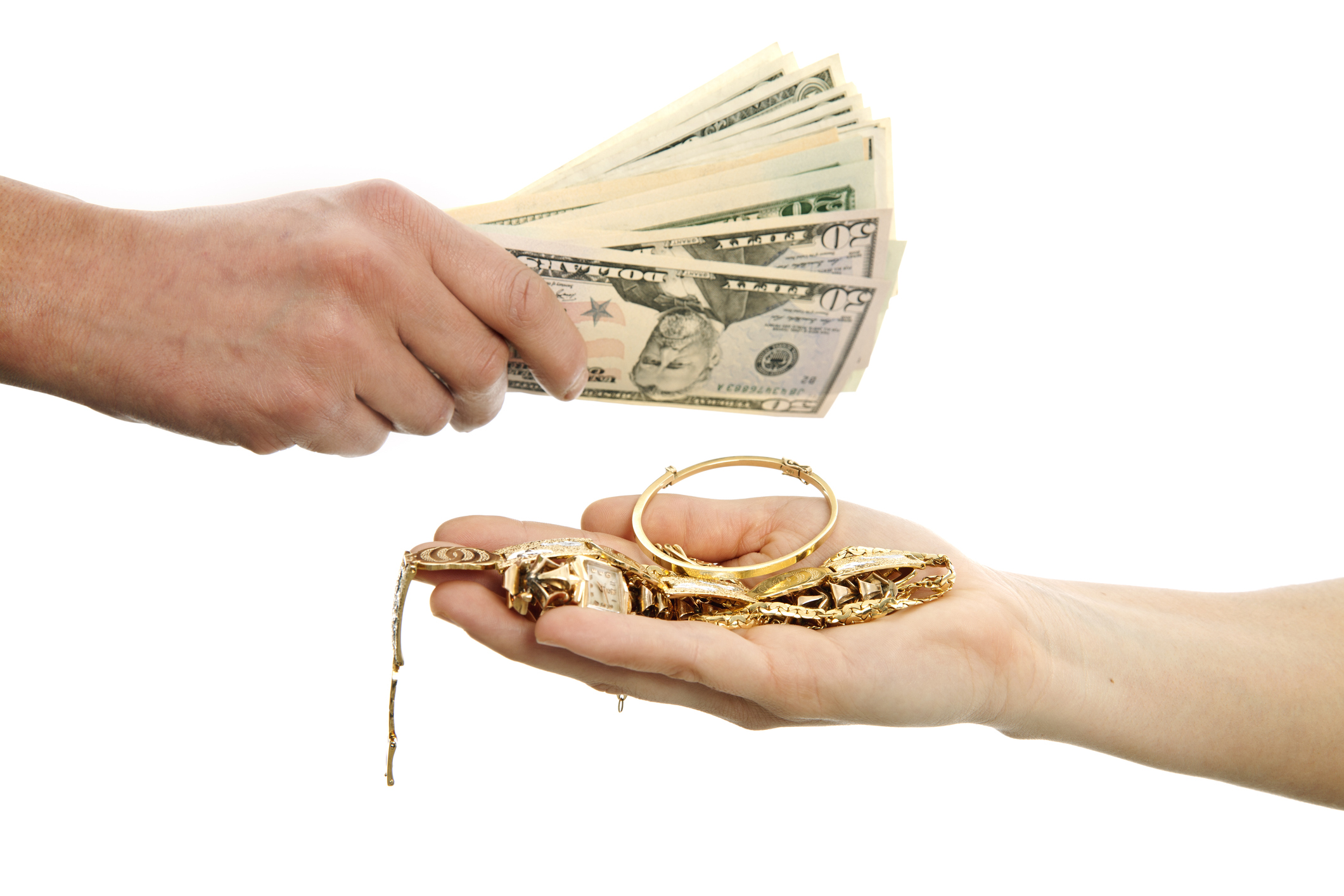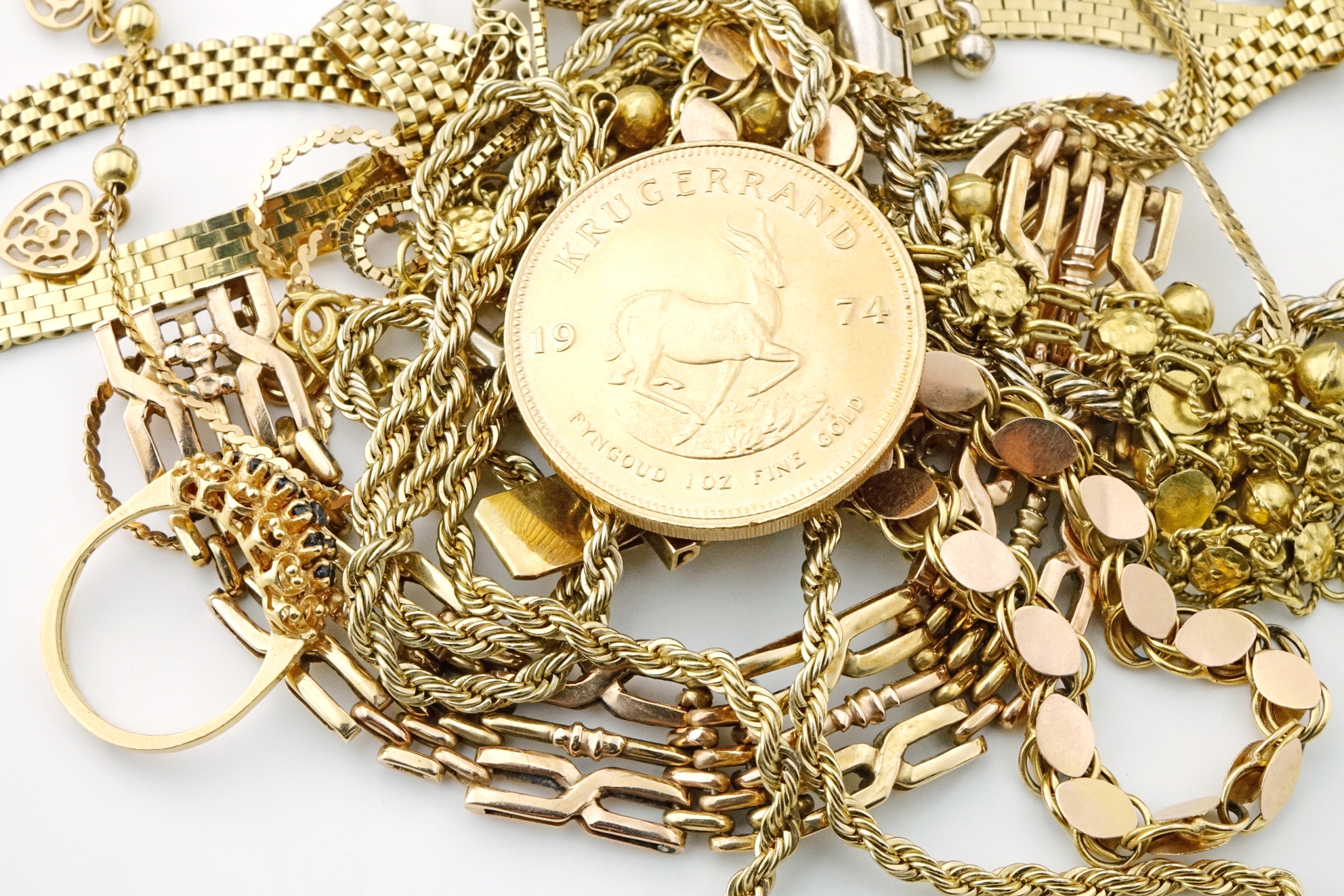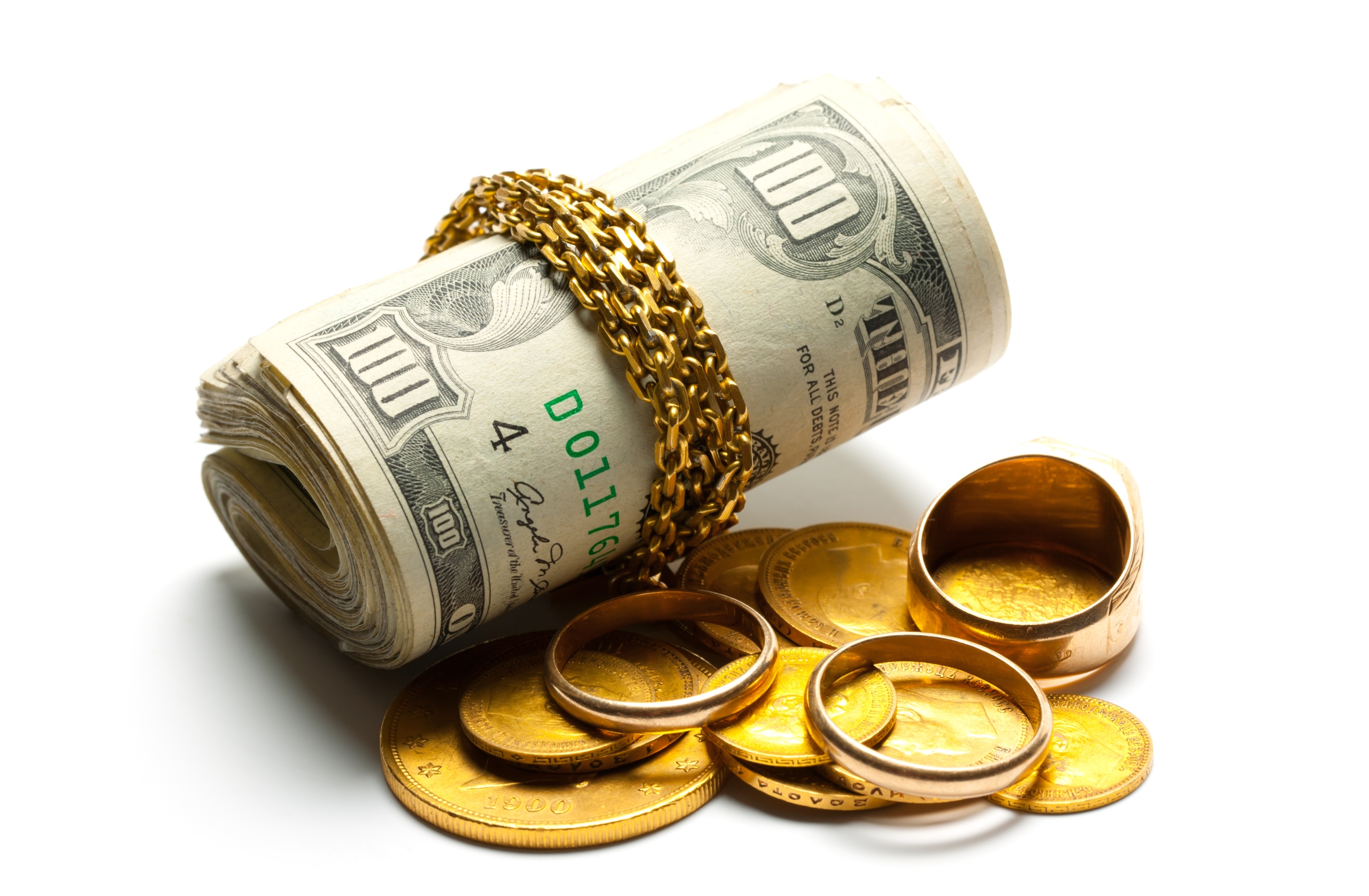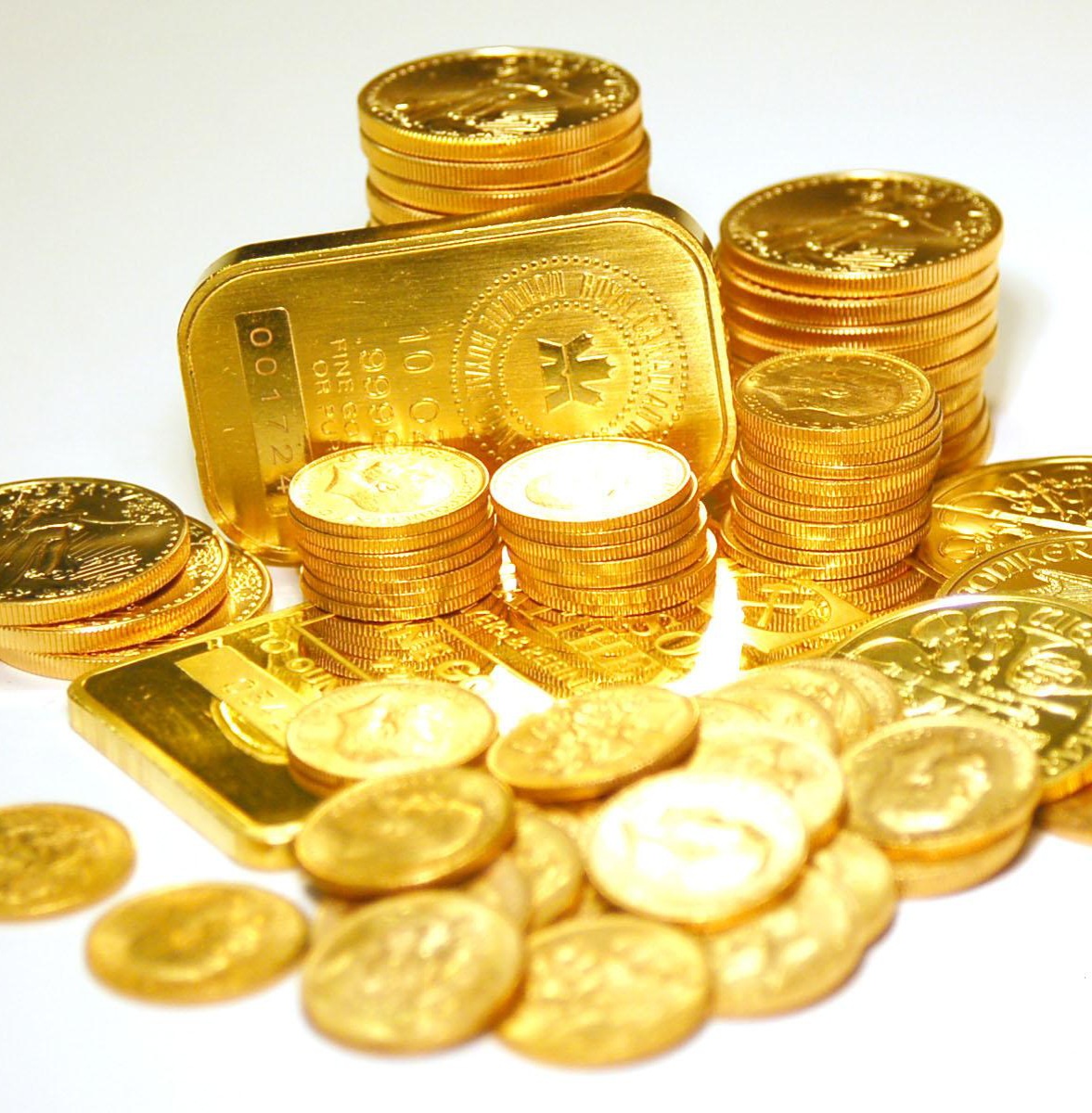How does cash for gold work?
Weight:
When it comes to getting the highest price for gold, the first thing to consider is that gold, and all precious metals are weighed in Troy weight. Troy weight has been used for precious metals for millenia and is still in common use Whereas a dry ounce is 28.35 grams, a Troy ounce of gold contains 31.103 grams. So, grams being the same, an ounce of gold weighs more than an ounce of rice. Equally unique is that a Troy pound of gold weighs 12 Troy ounces. Many older establishments do not weigh in grams at all, but rather Pennyweight (abbr. DWT). There are 20 Pennyweights in an ounce of gold, silver and platinum, making one pennyweight equal 1.556 grams.
20 Pennyweight = 1 Troy ounce
31.1 Grams = 1 Troy ounce
12 Troy ounces = 1 Troy pound
373.242 Grams = 1 Troy pound
Karat:
So now that we’ve covered weight, we get into karat. Karat refers to the proportion of gold in a gold alloy. Nearly all gold is alloyed, or mixed, with other materials to enhance its properties. Since gold is a very soft material, other metals are added to increase durability and reduce cost. In addition to durability, alloy metals can change the color of gold, giving it a white or rose hue (common) and many other colors (less common). So, what exactly is Karat? A gold bar or coin that’s .999 pure or higher, it is referred to as 24 Karat. 24 Karat gold is pure gold, with no alloy metals at all. Pure gold and its alloys are measured in parts per 24. In other words, 14 Karat gold is 14 parts pure gold and 10 parts alloy material. 18 Karat gold is 18 parts gold and 6 parts alloy material. Gold alloys typically range from 8 Karat up to 24 Karats. Jewelry is frequently stamped with a percentage rather than the Karat content. This is a breakdown of the most common gold alloys by percentage:
8 Karat = .333
9 Karat =.375
10 Karat = .417
14 Karat = .585
18 Karat = .750
22 Karat = .916
With this formula, you can see that if you have a piece of 14 karat gold jewelry, and it weighs one Troy Ounce (31.1 grams) it will contain 58.5% of an ounce of gold or roughly 18.2 grams of pure gold.
Spot gold price:
With all this arithmetic, how do you know you’re getting the best price for your gold? What you are looking for is the highest percentage against the “spot price”. Spot price is the exact price of gold as it’s trading throughout the trading day, or the price it closed at when the market closed for the day. Spot price goes up and down all day but rarely deviates by any significant margin. When a jewelry buyer, pawn shop or cash for gold establishment sells gold, it’s sent to a precious metal refiner. The refiner’s job is to remove all alloy metals and bring the material back up to 24k pure gold. Since there is significant time, labor and energy consumed, refiners pay us a few percent back from spot price. Our profit is the difference between what we pay and what we will receive from the refiner. Many cash for gold shops pay far less than half of what they will receive from the refiner and that just isn’t a good deal for the consumer. However, paying extremely close to what the refiner will pay isn’t a good deal for the business. A happy medium must be reached where both parties benefit.
Hold period:
In most states, with each precious metal purchase it is mandatory that the business report all the details of the item and the customer to local law enforcement for comparison against jewelry that has been reported stolen. Additionally, in most states merchants will be required to hold the merchandise for a period of 30 to 60 days before it can be sent to a refiner and melted. Should a piece match an item reported stolen, police then seize the merchandise as evidence until the disposition of the case. Rarely is the business compensated for merchandise seized by law enforcement. Therefore, in neighborhoods with higher police seizure rates the payout will reflect that. Most shops will purchase gold at between 65% and 80% of its melt value. This leaves the merchant with a profit assuming their seizure rate is minimal. If a merchant is paying more, odds are they won’t last as a matter of arithmetic. If they’re paying much lower, it may be worth it to shop around.
Testing gold:
So now to the matter of testing. How exactly do we determine the karat of gold in a piece of jewelry? There are several ways to test gold for purity. Some are more effective than others, and some rely on a good deal of skill and experience. One of the oldest and most effective testing techniques uses nitric acid. Small scratch marks are made with the jewelry piece on a flat abrasive stone and nitric acid in various concentrations is then applied to the scratch marks. When the right concentration of nitric acid is used, the scratch will remain on the stone rather than fade or disappear. This test is often misread and leaves a lot of room for error. Additionally, it is more frequently than not performed incorrectly and can yield wildly inaccurate results. The most common misapplication of this technique is putting nitric acid directly on the jewelry item after filing into the piece. Should you witness someone performing a test in this manner, it’s probably best to find another store to do business with.
Another way of determining karat is electronic testing. There are electronic testers that quickly determine gold karat and while there are different levels of effectiveness, an electronic gold tester can be very accurate. The final way to test gold in store is using an XRF machine.Many industries use XRF technology for material verification in many industries and it’s an excellent fit for precious metals. It involves shooting an X-ray beam directly into the jewelry or coin and which then analyzes the result at an elemental level This is probably the most accurate way to determine gold purity but is rather cost-restrictive for smaller shops. Many stores use a combination of these testing methods to avoid the drawbacks that each method has individually.
Conclusion:
In conclusion, do not let the gold selling process intimidate you. Hopefully, armed with a little extra knowledge you can make the best decision when it comes time to sell your gold. At the very least, you have additional understanding of how the process works and how we come to our numbers.






